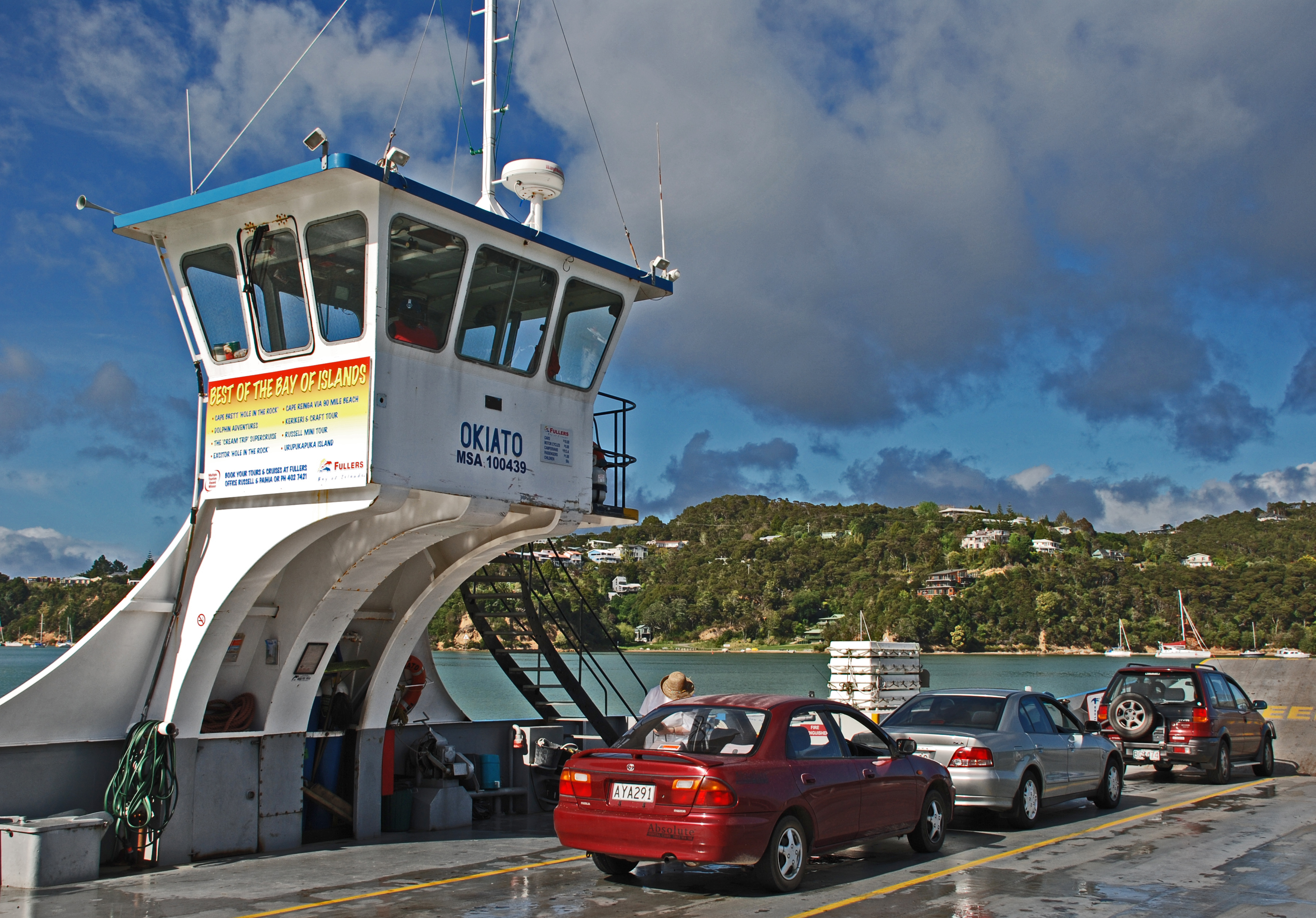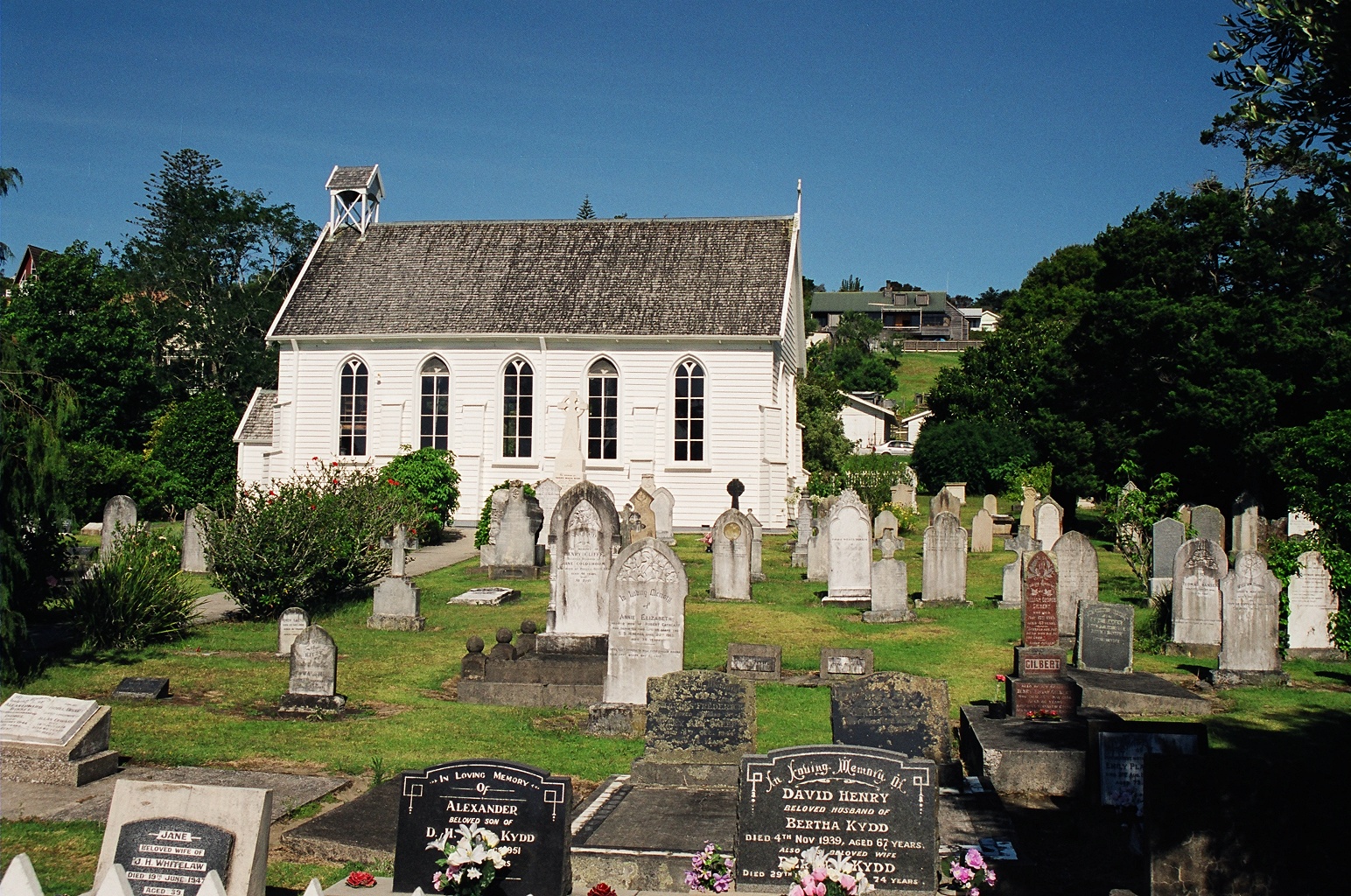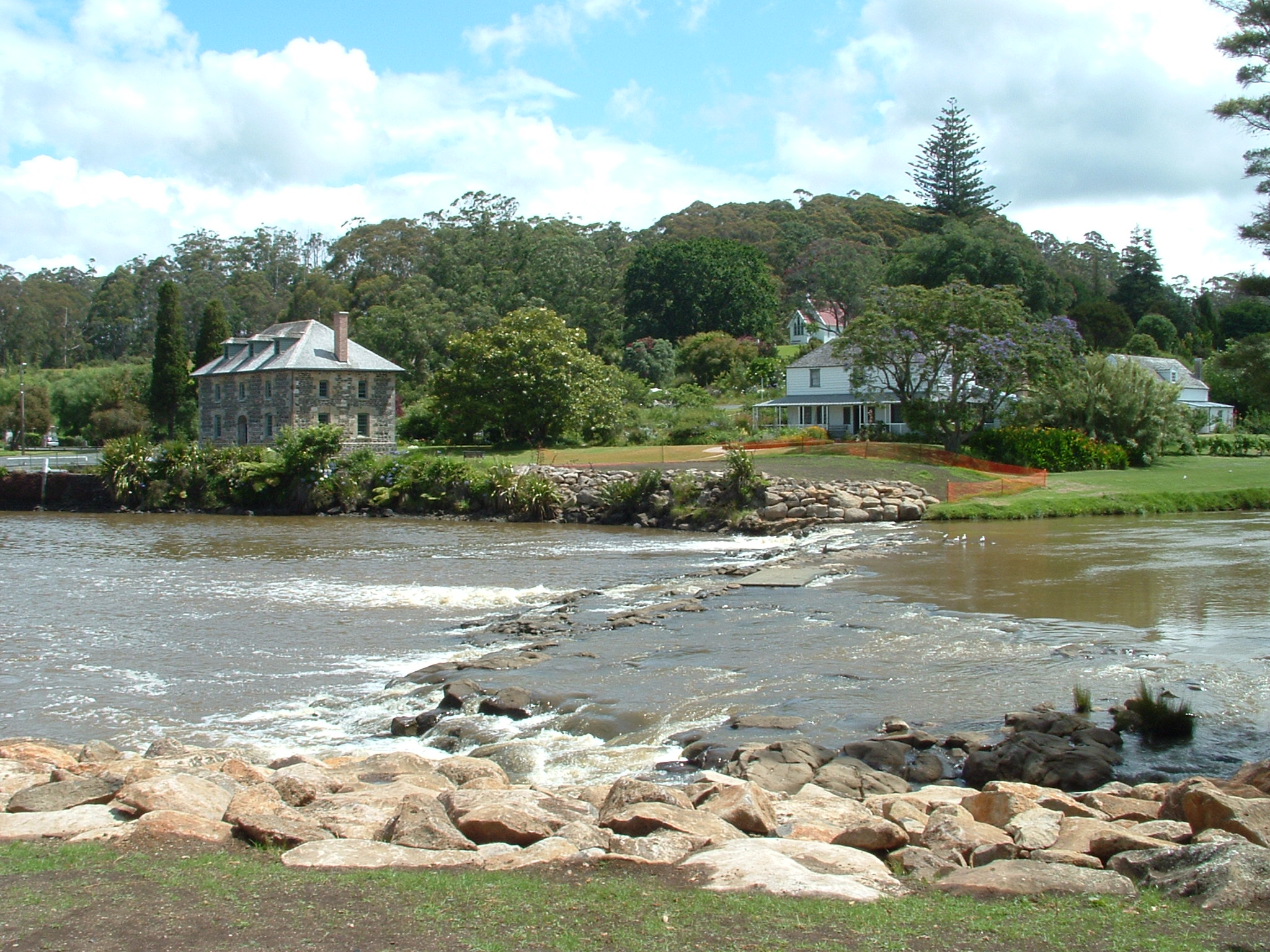|
Okiato
Okiato or Old Russell is a small town in the Bay of Islands, New Zealand, south of present-day Russell. It was founded in 1840 and served as New Zealand's first national capital until 1841, when the seat of government was moved to Auckland. The car ferry across the Bay of Islands, which provides the main access to Russell, runs between Okiato and Opua. Etymology The name Okiato comes from Māori. The New Zealand Ministry for Culture and Heritage translates ''Ōkiato'' to "place of receptacle for holding sacred objects" . History Pomare, the local Māori chief in the 1830s, sold land at Okiato to a British merchant and ship owner, Captain James Reddy Clendon, who settled there in 1832 and set up a trading station with partner Samuel Stephenson. Clendon became the first United States Consul for New Zealand in 1838 or 1839. When the Treaty of Waitangi was signed in February 1840, Lieutenant-Governor William Hobson instructed the Surveyor-General, Felton Mathew, to r ... [...More Info...] [...Related Items...] OR: [Wikipedia] [Google] [Baidu] |
Capital Of New Zealand
Wellington has been the capital of New Zealand since 1865. New Zealand's first capital city was Old Russell ( Okiato) in 1840–41. Auckland was the second capital from 1841 until 1865, when Parliament was permanently moved to Wellington after an argument that persisted for a decade. As the members of parliament could not agree on the location of a more central capital, Wellington was decided on by three Australian commissioners. Okiato Okiato or Old Russell is a small holiday spot in the Bay of Islands, south of present-day Russell, which was then known as Kororareka. Okiato was New Zealand's first national capital, for a short time from 1840 to 1841, before the seat of government was moved to Auckland. William Hobson arrived in New Zealand on 29 January 1840, the date now celebrated as the Auckland Anniversary Day. On the following day, as Lieutenant-Governor he proclaimed British Sovereignty in New Zealand. 30 January 1840 was the day that the Union Jack was flown on th ... [...More Info...] [...Related Items...] OR: [Wikipedia] [Google] [Baidu] |
Russell, New Zealand
Russell, known as Kororāreka in the early 19th century, was the first permanent European settlement and seaport in New Zealand. It is situated in the Bay of Islands, in the far north of the North Island. History and culture Māori settlement Before the arrival of the Europeans, Russell was inhabited by Māori because of its salubrious climate and the abundance of food, fish and fertile soil. Russell was then known as Kororareka, and was a small settlement on the coast. The early European explorers like Britain’s James Cook (1769) and France’s Marion du Fresne (1772) have remarked that the area was quite prosperous. European settlement When European and American ships began visiting New Zealand in the early 1800s, the indigenous Māori quickly recognised there were great advantages in trading with these strangers, whom they called . The Bay of Islands offered a safe anchorage and had a large Māori population. To attract ships, Māori began to supply food and ti ... [...More Info...] [...Related Items...] OR: [Wikipedia] [Google] [Baidu] |
James Reddy Clendon
James Reddy Clendon (1 October 1800 – 26 October 1872) was an early European settler in New Zealand, the first United States Consul to New Zealand, and he was a witness to the Declaration of the Independence of New Zealand (1835) and the Treaty of Waitangi (1840). Early life Clendon was born in 1800 in Deal, Kent, England, the son of George Clendon and Elizabeth Chitty. He started business as a shipowner in London with his brother, John Chitty Clendon. He married Sarah Hill in Sydney on 2 October 1826 and their first child, James Stephenson Clendon, was born in London in January 1827. Career New Zealand In 1828, as captain of the ''City of Edinburgh'', he transported female convicts to Sydney and then sailed to New Zealand to pick up spars. His wife Sarah Clendon was on the voyage, and in January 1829, at sea near Hokianga, she gave birth to their second child, Eliza. In 1830 he visited the Bay of Islands and bought of land from Pōmare II and Kiwikiwi, of Ngāti Manu, at ... [...More Info...] [...Related Items...] OR: [Wikipedia] [Google] [Baidu] |
Opua
Opua is a locality in the Bay of Islands, in the sub-tropical Northland Region of New Zealand. It is notable as the first port for overseas yachts arriving in the country after crossing the Pacific Ocean. In the original 1870s plans for the town, it was named Newport. The town of Paihia is nearby, and the small settlement of Te Haumi is in between. The car ferry across the Bay of Islands, the main tourist access to Russell, runs between Opua and Okiato. The New Zealand Ministry for Culture and Heritage gives a translation of "place of the flower" for ''Ōpua''. The Waimangaro area north-west of Opua is listed on the Ngāpuhi and Te Puni Kōkiri websites as a traditional meeting point of the Ngāpuhi hapū of Te Uri Ongaonga. Demographics Opua, including Te Haumi to the north, covers and had an estimated population of as of with a population density of people per km2. Opua had a population of 1,137 at the 2018 New Zealand census, an increase of 129 people (1 ... [...More Info...] [...Related Items...] OR: [Wikipedia] [Google] [Baidu] |
Bay Of Islands
The Bay of Islands is an area on the east coast of the Far North District of the North Island of New Zealand. It is one of the most popular fishing, sailing and tourist destinations in the country, and has been renowned internationally for its big-game fishing since American author Zane Grey publicised it in the 1930s. It is north-west of the city of Whangarei. Cape Reinga, at the northern tip of the country, is about by road further to the north-west. Geography The bay itself is an irregularly-shaped -wide, drowned valley system and a natural harbour. It contains 144 islands, of which the largest is Urupukapuka, and numerous peninsulas and inlets. The three largest inlets are Waikare Inlet in the south, and Kerikeri and Te Puna (Mangonui) inlets in the north-west. The Purerua Peninsula, north of Te Puna Inlet, separates the north-western part of the bay from the Pacific Ocean, and Cape Brett Peninsula extends into the ocean at the eastern end of the bay. The biggest ... [...More Info...] [...Related Items...] OR: [Wikipedia] [Google] [Baidu] |
Auckland
Auckland (pronounced ) ( mi, Tāmaki Makaurau) is a large metropolitan city in the North Island of New Zealand. The most populous urban area in the country and the fifth largest city in Oceania, Auckland has an urban population of about It is located in the greater Auckland Region—the area governed by Auckland Council—which includes outlying rural areas and the islands of the Hauraki Gulf, and which has a total population of . While Europeans continue to make up the plurality of Auckland's population, the city became multicultural and cosmopolitan in the late-20th century, with Asians accounting for 31% of the city's population in 2018. Auckland has the fourth largest foreign-born population in the world, with 39% of its residents born overseas. With its large population of Pasifika New Zealanders, the city is also home to the biggest ethnic Polynesian population in the world. The Māori-language name for Auckland is ', meaning "Tāmaki desired by many", in ref ... [...More Info...] [...Related Items...] OR: [Wikipedia] [Google] [Baidu] |
United States Ambassador To New Zealand
The United States has maintained a consular presence in New Zealand since 1838. The first consul was James Reddy Clendon. Born in England, Clendon was a ship owner and merchant who bought land and settled in the Bay of Islands, New Zealand. In 1838 he was appointed by the federal government of the United States as consul for New Zealand. He was based at his property at Okiato, which in 1840 became the capital and was renamed Russell (not to be confused with present-day Russell). He held this position until 1841. On July 16, 2021 President Joe Biden nominated former Senator Tom Udall to serve as United States Ambassador to New Zealand and Samoa. He was confirmed by the Senate on October 26, 2021 and the start of his tenure began on December 2, 2021. The Ambassador to New Zealand is also accredited to Samoa though resident in Wellington. List of United States ambassadors to New Zealand See also * Embassy of the United States, Wellington *New Zealand - United States relations ... [...More Info...] [...Related Items...] OR: [Wikipedia] [Google] [Baidu] |
New South Wales
) , nickname = , image_map = New South Wales in Australia.svg , map_caption = Location of New South Wales in AustraliaCoordinates: , subdivision_type = Country , subdivision_name = Australia , established_title = Before federation , established_date = Colony of New South Wales , established_title2 = Establishment , established_date2 = 26 January 1788 , established_title3 = Responsible government , established_date3 = 6 June 1856 , established_title4 = Federation , established_date4 = 1 January 1901 , named_for = Wales , demonym = , capital = Sydney , largest_city = capital , coordinates = , admin_center = 128 local government areas , admin_center_type = Administration , leader_title1 = Monarch , leader_name1 = Charles III , leader_title2 = Governor , leader_name2 = Margaret Beazley , leader_title3 = Premier , leader_name3 = Dominic Perrottet ( Liberal) , national_representation = Parliament of Australia , national_representation_type1 = Sen ... [...More Info...] [...Related Items...] OR: [Wikipedia] [Google] [Baidu] |
Robert FitzRoy
Vice-Admiral Robert FitzRoy (5 July 1805 – 30 April 1865) was an English officer of the Royal Navy and a scientist. He achieved lasting fame as the captain of during Charles Darwin's famous voyage, FitzRoy's second expedition to Tierra del Fuego and the Southern Cone. FitzRoy was a pioneering meteorologist who made accurate daily weather predictions, which he called by a new name of his own invention: "forecasts". In 1854 he established what would later be called the Met Office, and created systems to get weather information to sailors and fishermen for their safety. He was an able surveyor and hydrographer. As Governor of New Zealand, serving from 1843 to 1845, he tried to protect the Māori from illegal land sales claimed by British settlers. Early life and career Robert FitzRoy was born at Ampton Hall, Ampton, Suffolk, England, into the upper echelons of the British aristocracy and a tradition of public service. Through his father, General Lord Charles FitzRoy ... [...More Info...] [...Related Items...] OR: [Wikipedia] [Google] [Baidu] |
William Hobson
Captain William Hobson (26 September 1792 – 10 September 1842) was a British Royal Navy officer who served as the first Governor of New Zealand. He was a co-author of the Treaty of Waitangi. Hobson was dispatched from London in July 1839, with instructions to take the constitutional steps needed to establish a British colony in New Zealand. He was sworn in as Lieutenant-Governor in Sydney (under George Gipps) and arrived in New Zealand on 29 January 1840. On 5 February 1840, Hobson met with Māori chiefs at Waitangi, and the following morning they signed a treaty by which the chiefs purportedly voluntarily transferred sovereignty to the British Crown in return for guarantees respecting their lands and possessions and their rights as British subjects. Three months later, Hobson proclaimed British sovereignty over the islands of New Zealand. He also selected the site for a new capital, which he named Auckland. In May 1841, New Zealand was constituted as a separate ... [...More Info...] [...Related Items...] OR: [Wikipedia] [Google] [Baidu] |
2018 New Zealand Census
Eighteen or 18 may refer to: * 18 (number), the natural number following 17 and preceding 19 * one of the years 18 BC, AD 18, 1918, 2018 Film, television and entertainment * ''18'' (film), a 1993 Taiwanese experimental film based on the short story ''God's Dice'' * ''Eighteen'' (film), a 2005 Canadian dramatic feature film * 18 (British Board of Film Classification), a film rating in the United Kingdom, also used in Ireland by the Irish Film Classification Office * 18 (''Dragon Ball''), a character in the ''Dragon Ball'' franchise * "Eighteen", a 2006 episode of the animated television series '' 12 oz. Mouse'' Music Albums * ''18'' (Moby album), 2002 * ''18'' (Nana Kitade album), 2005 * '' 18...'', 2009 debut album by G.E.M. Songs * "18" (5 Seconds of Summer song), from their 2014 eponymous debut album * "18" (One Direction song), from their 2014 studio album ''Four'' * "18", by Anarbor from their 2013 studio album ''Burnout'' * "I'm Eighteen", by Alice Cooper comm ... [...More Info...] [...Related Items...] OR: [Wikipedia] [Google] [Baidu] |
2013 New Zealand Census
The 2013 New Zealand census was the thirty-third national census. "The National Census Day" used for the census was on Tuesday, 5 March 2013. The population of New Zealand was counted as 4,242,048, – an increase of 214,101 or 5.3% over the 2006 census. The 2013 census forms were the same as the forms developed for the 2011 census which was cancelled due to the February 2011 major earthquake in Christchurch. There were no new topics or questions. New Zealand's next census was conducted in March 2018. Collection methods The results from the post-enumeration survey showed that the 2013 census recorded 97.6 percent of the residents in New Zealand on census night. However, the overall response rate was 92.9 percent, with a non-response rate of 7.1 percent made up of the net undercount and people who were counted in the census but had not received a form. Results Population and dwellings Population counts for New Zealand regions. Note: All figures are for the census usually ... [...More Info...] [...Related Items...] OR: [Wikipedia] [Google] [Baidu] |



.jpg)

_p225_AUCKLAND%2C_NEW_ZEALAND.jpg)



